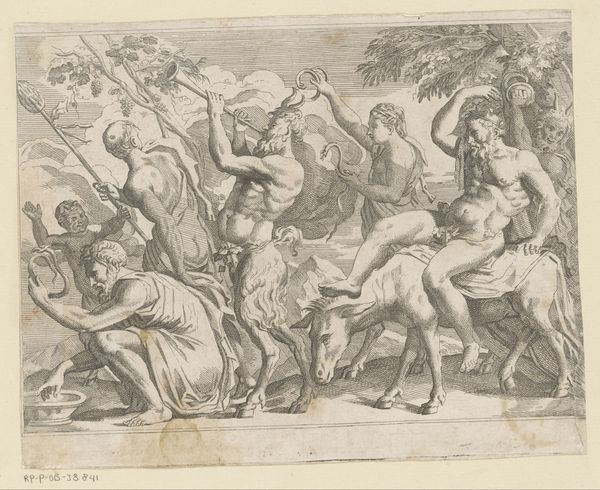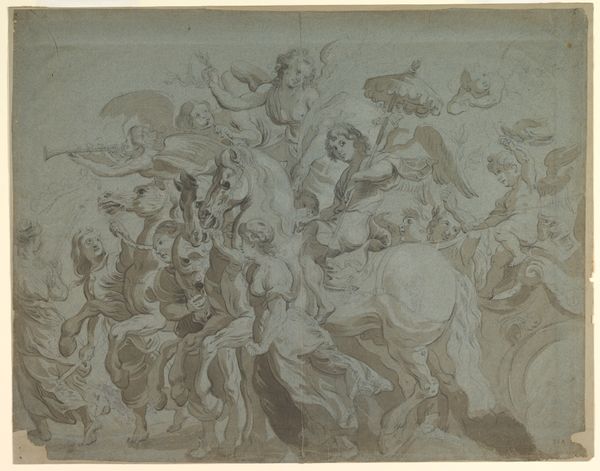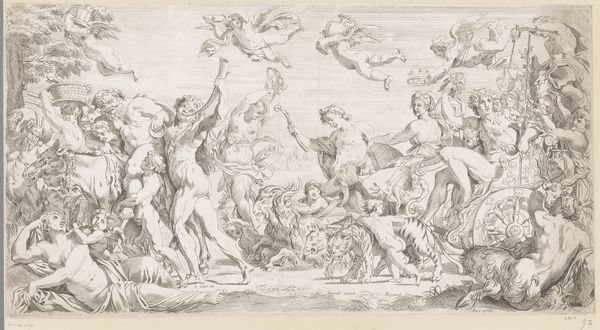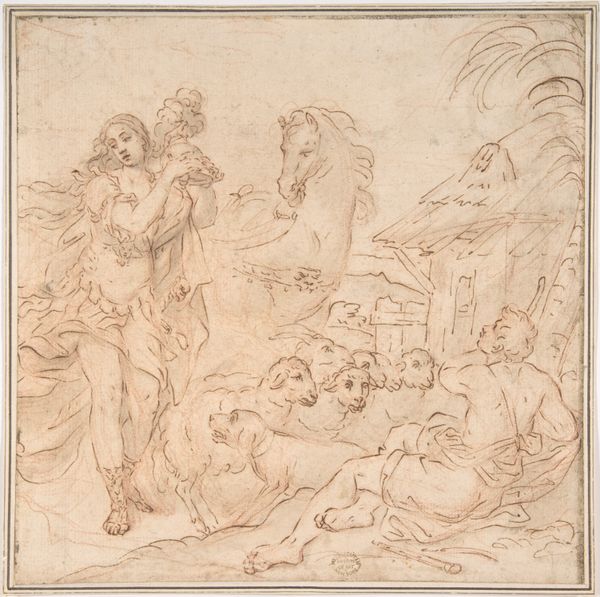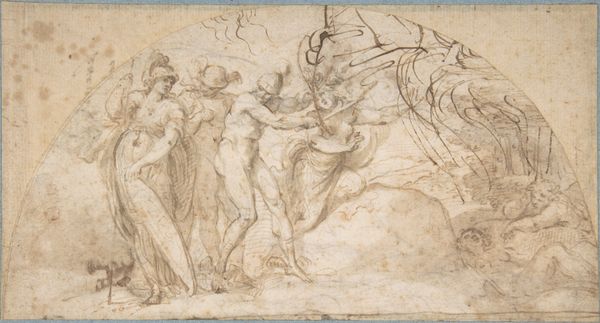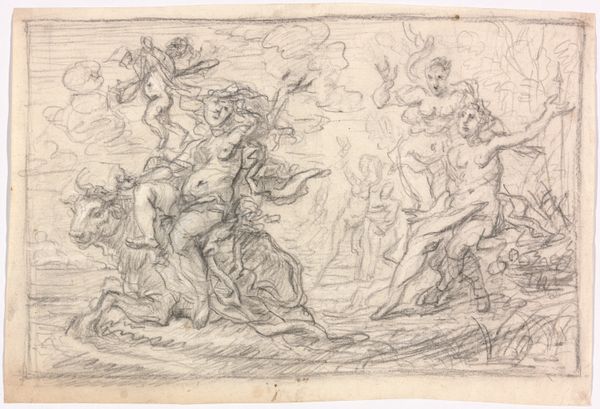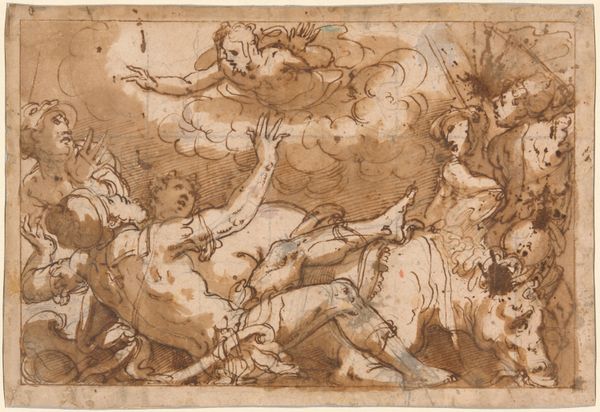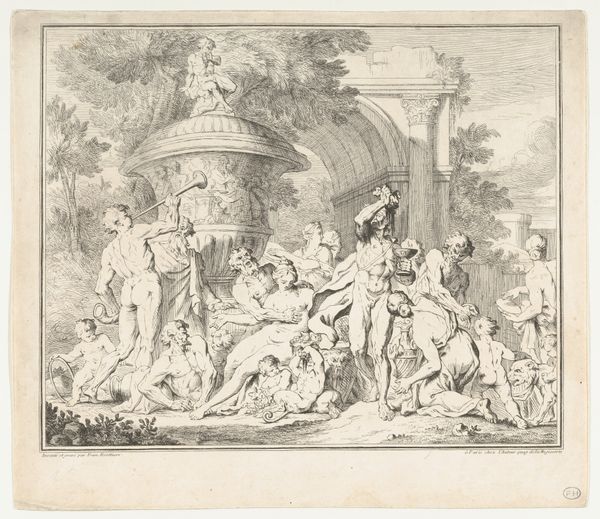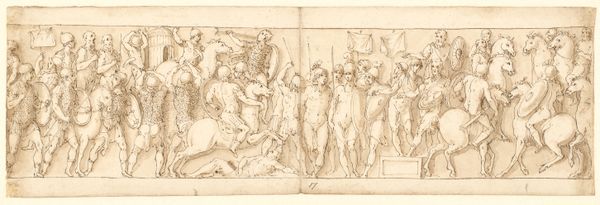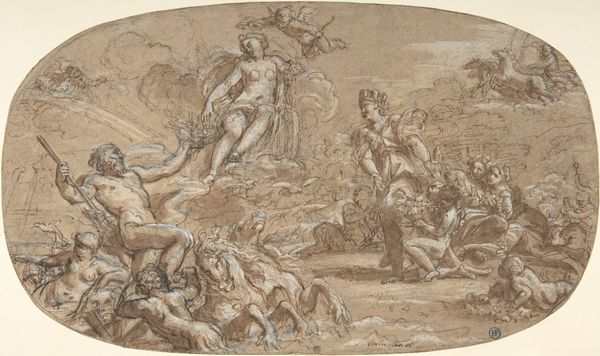
Venus Watching Vulcan and Cyclops Forge Armor for Mars 1665 - 1684
0:00
0:00
drawing, etching, ink
#
drawing
#
narrative-art
#
baroque
#
ink painting
#
etching
#
classical-realism
#
etching
#
figuration
#
ink
#
history-painting
Dimensions: 9 1/2 x 14 5/16 in. (24.2 x 36.3 cm)
Copyright: Public Domain
Editor: This is Raymond de La Fage’s “Venus Watching Vulcan and Cyclops Forge Armor for Mars,” created sometime between 1665 and 1684. It's rendered in ink. There's an energy to the linework that almost makes it feel chaotic, yet incredibly dynamic. What catches your eye most about this work? Curator: What fascinates me is the representation of labor itself. The intense physical effort – look at the strain on the cyclops’ bodies – reveals the often-unseen human element behind mythological power struggles. Consider the materiality of the drawing, ink meticulously applied, to illustrate the forging of armor. Editor: So, you’re focusing on the contrast between the 'high art' subject matter and the sheer labor depicted? Curator: Exactly. And more than that, how the means of production – the forge, the hammer, the raw materials implied – dictate the form and the narrative itself. Venus watches, a consumer in a way, overseeing the creation of implements of war. Is she not as complicit as the forge workers in the violence? Editor: I hadn’t thought of it that way. So the ink, the linework, they are not just stylistic choices, but a way of emphasizing the human toil inherent in the creation of power, represented by Mars' armor? Curator: Precisely. Think about the economics, the social structure represented by Venus overseeing, and the cyclops, literally creating with the sweat of their brow. The raw materials transformed, the energy expended - the whole picture shows us power arising out of work, a cycle of production and consumption, violence and order. Editor: It changes my whole understanding of classical imagery! Thanks for illuminating how materiality informs the narratives portrayed in this piece. Curator: It reveals the artist's perspective. Every mark echoes those swings of the cyclops’ hammers.
Comments
No comments
Be the first to comment and join the conversation on the ultimate creative platform.
